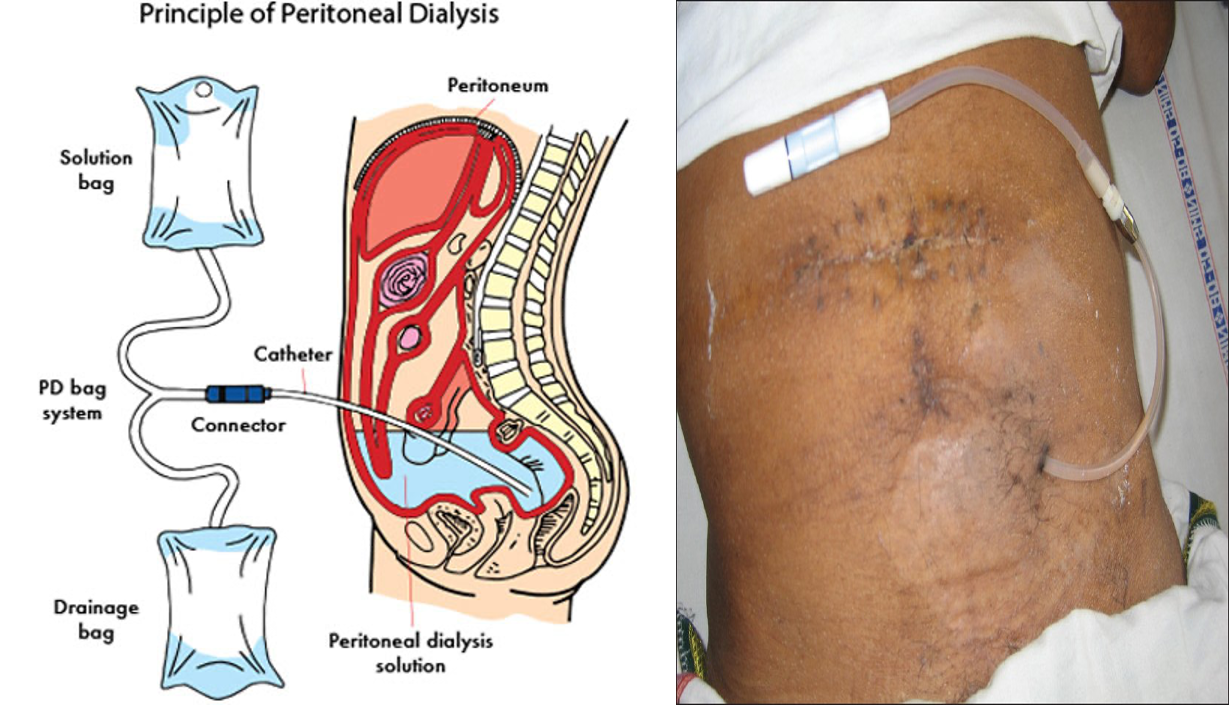PERITONEAL DIALYSIS CATHETER

PERITONEAL DIALYSIS
-
In P.D., dialysate is put into the peritoneal cavity and left for few hrs.
-
Peritoneum acts like a semipermeable membrane.
-
Toxic wastes and water diffuse from the blood vessels of the peritoneum into the cavity.
-
The “dirty” dialysis fluid is then removed and new fluid is put. This is done 4-5 times daily (by the patient at home)
P.D. FLUID (dialysate)
 IN PERITONEAL DIALYSIS, GLUCOSE IN THE DIALYSIS FLUID PULLS THE WATER OUT FROM THE BLOOD VESSELS BY OSMOSIS.
IN PERITONEAL DIALYSIS, GLUCOSE IN THE DIALYSIS FLUID PULLS THE WATER OUT FROM THE BLOOD VESSELS BY OSMOSIS.
WHEN TO USE P.D. ?
Rarely used now. Used in the following situations:
- In infants & very young children
- Poor blood vessels (can’t make a fistula)
- Patient wants freedom
CONTRAINDICATION FOR PERITONEAL DIALYSIS
- Adhesions and fibrosis in the peritoneal cavity (due to past surgeries)
- Recent abdominal surgery
COMPLICATIONS OF PERITONEAL DIALYSIS
-
Catheter site infection
-
Tube blocked / twisted
-
Peritonitis:
- Abdominal pain, tenderness, fever
- Give antibiotics
-
Hyperglycemia: Dialysis fluid contains too much glucose which is absorbed in the blood. The hyperglycemia may need insulin.
-
Excess protein loss from the peritoneum (increase the protein intake to 1.2 g/kg/d in these patients)
P.D.
ADVANTAGES
- SIMPLE
- NO HEPARIN
- Patient freedom
DISADVANTAGES
- RISK OF PERITONITIS
- EXPOSURE TO HIGH GLUCOSE (SOMETIMES REQUIRING INSULIN)
- Not very efficient